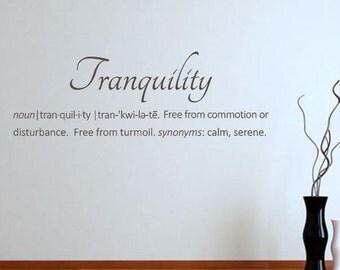

When we sit to practice, we do these preliminary exercises to help us to focus our mind, which is really the beginning of actual meditation it is not meditation itself. these in themselves are means to develop concentration.
#Define serenity how to#
So, to help us to really understand where we are, and how to effectively concentrate, this map will lead us towards the real gateway to meditation.Įverything that we do in these studies, pertaining to runes, mantra, pranayama, transmutation, sacred rites. Then, through gradual training, our practice eventually leads us towards a mind that is completely serene, a mind that is completely still. This image explains how, from the beginning of concentration, the mind is disturbed and wild. He also spoke, in a very synthetic manner, about these nine stages, emphasized in this image, which we are going to explain in detail. He never explicitly detailed the nine degrees of calm abiding, or the nine steps leading to calm abiding―to have a serene mind―instead, he expected his students to really study and meditate on the teachings, and to work to comprehend this methodology in practice. This teaching, pertaining to Buddhism, was taught by Samael Aun Weor in a very synthetic manner. The purpose of this lecture is to understand where we are: what is our level of being? What is our capability? Our ability when we sit to concentrate, close our eyes, and really reflect inside? We study the following diagram, which is a very famous mural that we find in pretty much every Tibetan Buddhist monastery in the world, in order to understand where we are in our practice.

Specifically, when we address concentration, we do so with a purpose of understanding where we are. To aid us in our discipline, we're going to explore a very important teaching to Buddhism, particularly Tibetan Buddhism, known as the nine stages of meditative concentration.


 0 kommentar(er)
0 kommentar(er)
